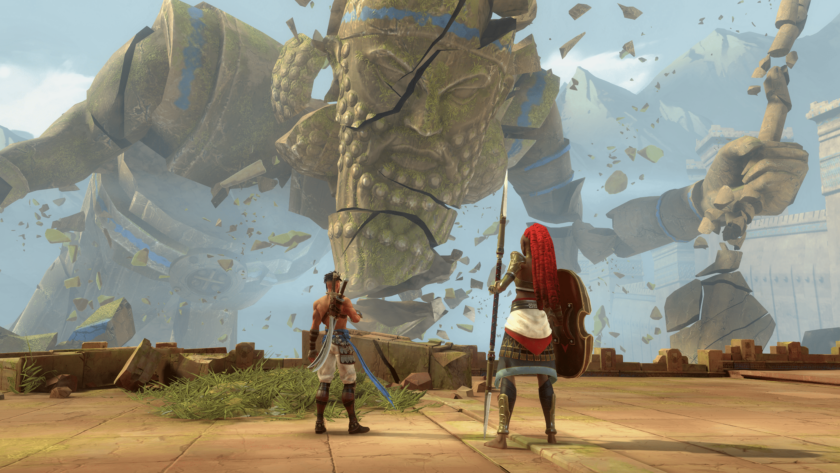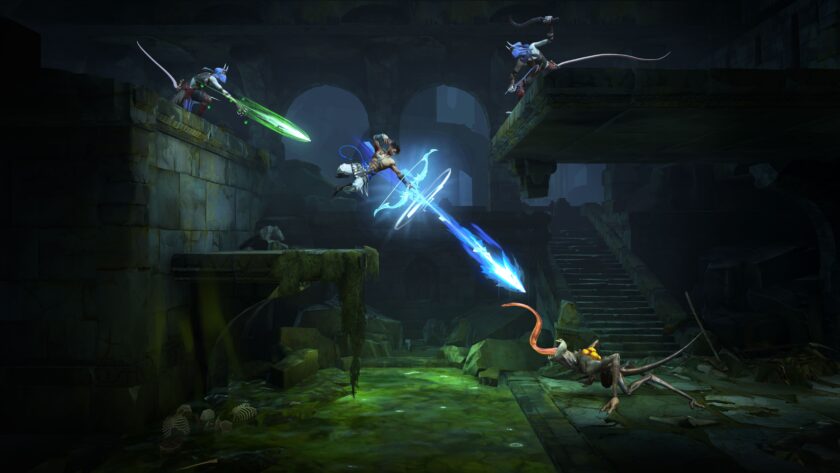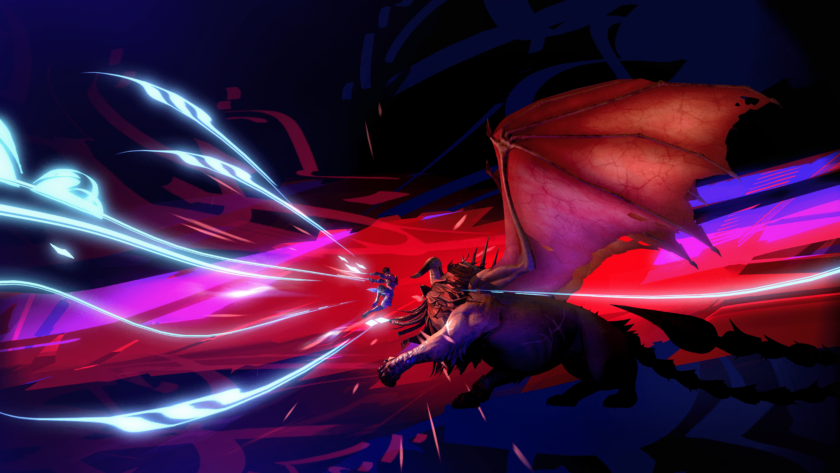
Remember those side-scrolling adventures that used to glue our noses to the screen? The pixelated worlds, the impossible jumps, the soundtrack that still echoes in our heads? Yeah, Prince of Persia just dusted off its scimitar and did a gravity-defying spin back into the spotlight with “The Lost Crown.” Forget all that fancy 3D stuff – this is pure, unadulterated 2D platforming heaven, but with a modern makeover that’ll make your nostalgia sing.
Think of it like bumping into an old friend who’s been hitting the gym. Same iconic swagger, even sharper wit, and a new bag of acrobatic tricks that’ll have you questioning the laws of physics. The story dives in deeper than a desert scorpion’s burrow, with twists and turns that’ll keep you guessing like a lost camel in a sandstorm. And did I mention you can bend time itself? Yeah, this isn’t your average sword-swinging escapade.
The team at Ubisoft poured their sweat and sand into crafting this world. It’s like stepping back into your favorite pixelated memories, but with sharper visuals and smoother controls that feel like dancing on silk. You’ll be scaling forgotten temples, shimmying past booby-trapped tombs, and clashing blades with bad guys fiercer than a sunburned baboon.
It’s more than just a throwback; it’s a meticulous orchestration of nostalgia, where every leap and brush with oblivion evokes a whispered echo of the series’ vibrant past.
AT A GLANCE
Developer: Ubisoft
Release Date: January 18, 2024
Platforms: PlayStation 4, PlayStation 5, Xbox One, Xbox Series X/S, PC, Nintendo Switch
Genre: Action-adventure/Platformer
Final Score: 9/10
Story
The Lost Crown unfolds against the backdrop of Mount Qaf, a mysterious and cursed realm echoing with whispers of a bygone era. The narrative weaves a tapestry that pays homage to Persian mythology, intertwining history, and legend. In a departure from tradition, the eponymous prince takes a backseat, and players embody Sargon, the youngest member of the Immortals—a Persian royal guard super group of sorts, filled with the best warriors in the nation.
The plot thickens when a betrayer kidnaps the Prince, spiriting him away to the enigmatic Mount Qaf. Enter the Immortals, embarking on a perilous pursuit to rescue their captive royal charge. The setting allows the tale to flirt with the benevolent god Simurgh and other mythical elements, creating a pastiche that melds history with hyper-stylized visuals inspired by anime and comic books.

Ultimately the story falls short of the storylines that the series was once known for. While the story pays homage to Persian mythology and boasts intriguing ideas like a non-linear time flow, its execution can feel pedestrian. The characters, though charming, lack the depth and complexity of previous Prince of Persia heroes. The story unfolds competently, but it rarely transcends the realm of functional plot.
Despite all its shortcomings, the plot still exudes an odd charm. The Lost Crown invites players to a captivating tale that, while not groundbreaking, is undeniably engaging.
Gameplay
There’s no denying that Prince of Persia has always been platforming royalty, with its legacy carved in death-defying leaps and gravity-bending escapes. Now, The Lost Crown throws open the dusty vaults of the series, boldly striding into the vibrant realm of Metroidvania. But is this merely a nostalgic stroll down memory lane, adorned with shimmering scimitars and forgotten fables, or a genuine contender for the genre’s crown?

At its heart, The Lost Crown beats a mesmerizing rhythm of meticulously crafted combat. Forget button-mashing barbarity; this is a ballet of blades where Sargon, our nimble-footed protagonist, dances with lethal grace. His arsenal is a finely tuned instrument of attacks, dodges, and parries, each move adding a new note to the melody of combat. Basic combos bloom into breathtaking spectacles, seamlessly integrating platforming skills into the fluid choreography. Boss encounters, monumental in scale, are operatic masterpieces. Each battle becomes a dynamic ballet of blades, demanding precise timing and improvised creativity. Perfectly executed counters aren’t just damage boosts; they’re visual flourishes tailored to each foe, a testament to the game’s meticulous attention to detail.
The Lost Crown isn’t just about clashing steel; it’s a captivating exploration aria. Mount Qaf, the sprawling setting, unfolds as a concerto of diverse biomes, each a meticulously composed puzzle. Sun-drenched ruins whisper ancient secrets, while crystal-clad caverns echo with forgotten magic. Navigating these labyrinths demands not just platforming prowess but also keen observation and creative problem-solving. Optional challenges, like a virtuoso’s encore, reward audacious players with specialized currency, adding an extra layer of intrigue to the musical tapestry.

However, even the most vibrant tapestries have their dark threads. While the Memory Shard system, allowing players to mark locations on the map, injects a welcome touch of nostalgic mapping charm, its implementation feels underdeveloped. Marking locations is convenient, but the lack of additional notes or information limits its potential. Similarly, the economy, while mercifully eschewing the tired reliance on challenge coins, can feel a tad anemic. More avenues for resource expenditure, beyond basic upgrades, could further enrich the exploration loop.
Visuals and Audio
Prince of Persia: The Lost Crown ventures into the realm of 2D aesthetics, embracing a visual charm that pays homage to the series’ roots while delivering a modernized, captivating experience. The choice of a side-scrolling perspective is a nostalgic nod to the origins of the franchise in 1989, creating an aesthetic bridge between the past and the present. The result is a visually stunning tapestry that unfolds across Mount Qaf’s diverse landscapes.
The hand-drawn visuals breathe life into the ancient temples, catacombs, and royal libraries, each frame oozing with detail and personality. From the majestic structures to the earthy caverns adorned with bright crystalline patterns, every inch of the setting feels meticulously crafted. The Metroidvania exploration finds its zenith as the game introduces looming, invincible enemies that evoke echoes of Metroid Dread, adding an extra layer of intensity to the visual spectacle.

Complementing the mesmerizing visuals is the enchanting soundtrack that envelops the player in the atmospheric embrace of Persian mythology. The OST, a melodic journey inspired by the game’s anime and comic book influences, enhances the immersive experience. Each musical note weaves seamlessly into the fabric of the narrative, creating an auditory landscape that resonates with the game’s hyper-stylized action.
Unfortunately, the game falls a bit short in the voice acting department. While the main character’s portrayal stands out, the supporting cast showcases a spectrum of performances that, while competent, may not consistently reach the same heights. Occasional moments come across as overly dramatic or lacking in subtlety.
Final Thoughts
Summary
Prince of Persia: The Lost Crown may not be flawless, but its exhilarating combat and labyrinthine exploration more than make up for any stumbles. From chaining acrobatic attacks against corrupted foes to uncovering forgotten secrets in hidden chambers, every moment throbs with a sense of rewarding discovery. Whether you're a seasoned Metroidvania explorer seeking intricate level design or a Prince of Persia fan yearning for a fresh dose of Sands of Time-inspired charm, The Lost Crown delivers in spades. It's not just a triumphant return for the series, it's earned a spot amongst the elites of the genre.






